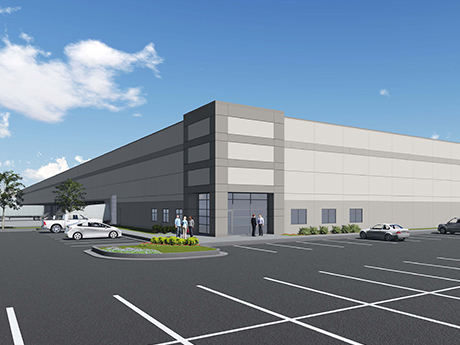With rising interest rates from the Federal Reserve playing out across the capital markets, uncertainty has crept into all corners of commercial real estate, even in red-hot industrial markets like Richmond. For the first time this cycle, deal velocity has slowed for new acquisitions and leasing activity alike in the greater Richmond area. Borrowing costs have skyrocketed in the past 12 months, leading to an extended period of price discovery from both buyers and sellers, thus fewer investment sales.

Richmond’s occupancy rate remained steady from first-quarter to second-quarter 2023 at 96 percent, according to research from Porter Realty. Occupancy ticked up 400 basis points for Class A space during that time frame — from 92 to 96 percent — and Class B stayed steady at 98 percent quarter-over-quarter. The second quarter saw more than 280,000 square feet of space returned to the market, though it had negligible impacts on occupancy rates. (Porter Realty tracks industrial facilities in the greater Richmond market sized 40,000 square feet and larger.)
The bulk of new leases recently are executed by third-party logistics providers. Recent deals include Riverside Logistics taking 90,000 square feet in Henrico County, Bermuda Distribution & Trucking subleasing 48,000 square feet in Chesterfield County and Cavalier Cargo Group taking down 34,358 square feet in Henrico County.
Earlier in the year, Japanese beer giant Sapporo, which recently purchased local brewing company Stone Brewing Co., leased nearly 150,000 square feet at Sauer Industrial Center. Porter Realty represented the landlord, Becknell Industrial, and is marketing the 130,000 square feet of vacant space in an adjacent building at Sauer Industrial Center.
Despite the slowdown in sales and leasing activity, Richmond’s fundamentals remain strong. The market benefits from the activity at the Port of Virginia, one of the deepest seaports on the East Coast, as well as strong population growth and access to several interstate corridors, including I-95, I-64 and I-85 to the south near Petersburg.
Because of the high occupancy in the Richmond market and strong demand for both Class A and second-generation spaces, landlords are able to push rental rates, though not as high as they would like. Developers are aiming for more than $8 per square foot in some Class A spaces, but the market is tempering those for the time being. For Class B space, tenants are paying in the $6 to $7 per square foot range.
Development slows
Going into the third quarter of the year, Richmond’s industrial development pipeline sits at a hair over 2.1 million square feet. This is compared to 5.9 million square feet under construction a year ago, a nearly 65 percent decline. In second-quarter 2021, the market had a development pipeline of 3.3 million square feet underway.
Porter Realty is tracking 13.4 million square feet of industrial product in the planning stages, ranging from 80,000 to 1.5 million square feet. This figure represents nearly a third of the market’s existing Class A, B and C inventory that is larger than 40,000 square feet and is not owner-occupied.
One of the bigger facilities to come on line recently is Hillwood developing a 2.6 million-square-foot fulfillment center in Henrico County for Amazon. According to local media outlet Richmond BizSense, AutoZone broke ground last year on an 800,000-square-foot owner-occupied distribution center in New Kent County. With projects like these, developers are stretching the boundaries of the Richmond metropolitan statistical area.
Additionally, The Lego Group is under construction on its $1 billion, 1.7 million-square-foot campus in Chesterfield, which represents the Danish toymaker’s first factory in the United States.
Most of the new development under construction is being developed on a speculative basis.
The lion’s share of new development, nearly 1.3 million square feet, is occurring in Richmond’s Northwest quadrant, due to the availability of developable land that is both zoned for industrial use and has sufficient utilities to support bulk construction.
Developments underway in the submarket include Lewistown 95 Logistics Center (552,587 square feet), which is owned by Jim Pattison Development Group. Food products supplier Genpak has preleased more than 400,000 square feet at the development.
In addition to Genpak, Performance Food Group has opened its Building 2 at Cardinal Commerce Center West (325,000 square feet), an $80.2 million development in Hanover County that is owned by Scannell Properties.
Additionally, more than 400,000 square feet is underway across two buildings at Washington Highway Distribution Center, which is owned by SAMET Corp. Developments like these could potentially be subdivided to satisfy the unmet demand from smaller tenants in the market, though adding new walls and instituting separate ingress/egress for tenants is not always economically advantageous.
The balance of new construction is concentrated in Richmond’s Southeast quadrant. These developments include more than 500,000 square feet at Ashton Logistics Park and a 187,980-square-foot project at 1701 Bermuda Hundred in Chester. The developer for both projects is locally based Lingerfelt.
In the market’s Northeast quadrant, Becknell is marketing available space at its Airport Logistics Center development in Henrico. Building 4 is a pad-ready opportunity that will span 187,500 square feet of modern bulk distribution space, as well as office finishes. The site is 1.5 miles from Richmond International Airport and a short distance to I-64 and I-95.
While deal velocity and development activity have slowed for the time being, now is not the time to worry about Richmond’s industrial market. The demand for space in this market remains elevated, and with industrial real estate’s laundry list of demand drivers still intact nationwide, coupled with Richmond’s inherent advantages, we expect this market to return to robust levels of activity in short order.
— By Cliff Porter, CCIM, SIOR, Executive Vice President, Porter Realty Co./CORFAC International. This article was originally published in the August 2023 issue of Southeast Real Estate Business.


